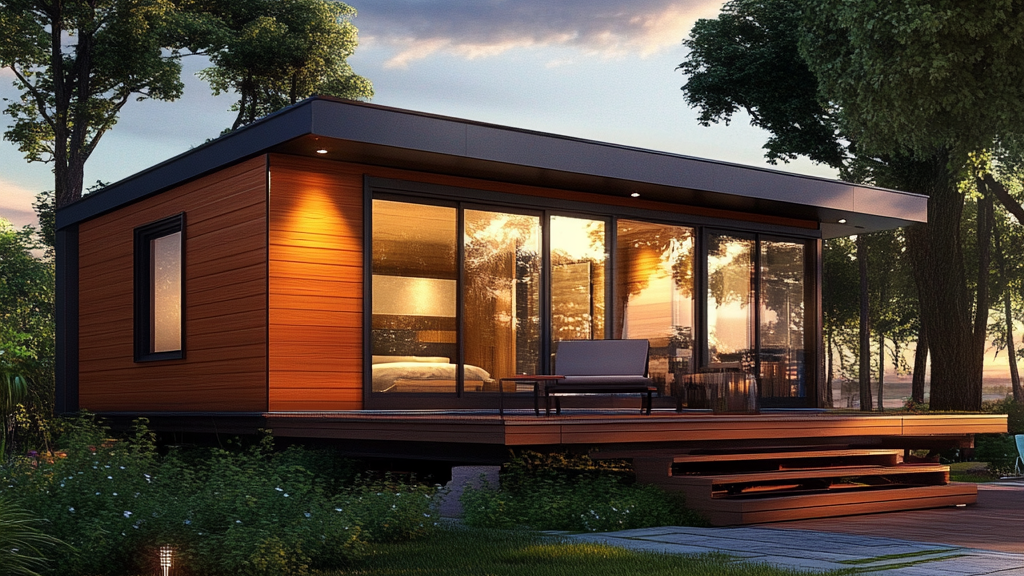Prefabricated homes are emerging as a modern solution to traditional housing challenges, combining efficiency with affordability. Built off-site and assembled on location, these homes offer a streamlined construction process and customizable designs.

What Are Prefabricated Homes?
Prefabricated homes, commonly known as prefab homes, are structures manufactured in a controlled environment before being transported for on-site assembly.¹ This approach differs from conventional building practices, where homes are constructed entirely on-site. Prefabricated homes come in various forms, including modular, panelized, and manufactured homes, each with distinct design and assembly methods.
The modular approach involves creating sections of the home in a factory, which are then transported and assembled on-site. Panelized homes consist of pre-cut panels assembled at the location, while manufactured homes are built on a permanent chassis and are subject to different regulations compared to site-built homes.
The growing popularity of prefabricated homes can be linked to advancements in construction technology and an increasing demand for sustainable building practices. The factory-controlled environment allows for better quality control and minimizes weather-related delays, a common issue in traditional construction. Consequently, prefabricated homes are increasingly viewed as a viable solution to meet housing demands more efficiently and environmentally friendly.
Benefits of Choosing Prefabricated Homes for Your Next Build
Opting for prefabricated homes offers numerous advantages appealing to a wide range of homeowners and builders.² One of the primary benefits is the speed of construction. Since many components are built simultaneously in a factory setting, the overall timeline for completing a home can be significantly reduced. This rapid construction process is particularly beneficial in addressing urgent housing needs, such as those arising from natural disasters or urban housing shortages. Additionally, the streamlined assembly can lead to lower labor costs, making it an attractive choice for budget-conscious buyers.
Another significant advantage of prefabricated homes is their customization potential. Many manufacturers provide various designs and layouts, allowing homeowners to tailor their living spaces to their specific needs and preferences. This flexibility includes choices in materials, finishes, and energy-efficient features, enabling buyers to create a home that reflects their personal style while adhering to sustainability goals. Furthermore, the integration of advanced technologies, such as smart home systems and energy-efficient appliances, enhances the appeal of prefabricated homes in today’s market.
Cost Efficiency and Speed in Prefabricated Homes
Cost efficiency is a defining characteristic of prefabricated homes, making them an attractive option for many prospective homeowners. The factory-based construction process often results in lower material costs due to bulk purchasing and reduced waste. Moreover, the shorter construction timeline can lead to lower labor costs, as fewer hours are required to complete the project. This combination makes prefabricated homes a more affordable alternative to traditional building methods, particularly for first-time homebuyers or those looking to downsize.
Speed is another critical factor that distinguishes prefabricated homes from conventional construction. The ability to construct multiple components simultaneously in a controlled environment allows for quicker assembly on-site. This efficiency accelerates the timeline for moving into a new home and minimizes the disruptions often associated with construction projects. Additionally, reduced exposure to weather-related delays can result in a more predictable completion date, which is a significant advantage for those with specific timelines.
Learn More About Prefabricated Homes
For those interested in exploring prefabricated homes further, numerous resources are available that delve into the different types, benefits, and considerations associated with this innovative building method. Engaging with industry reports, academic studies, and reputable publications can provide valuable insights into the latest trends and technologies in prefabricated construction. Understanding the nuances of this approach can empower potential homeowners to make informed decisions that align with their needs and values.

